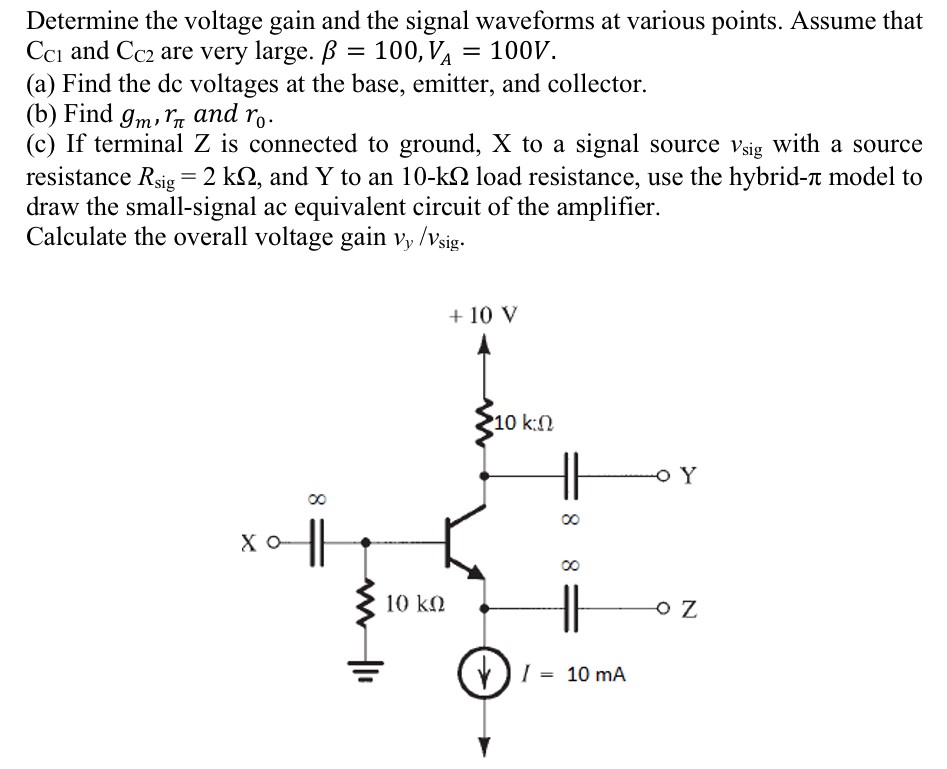Determine the voltage gain and the signal waveforms at various points. Assume that CC1 and CC2 are very large. β = 100, VA = 100 V. (a) Find the dc voltages at the base, emitter, and collector. (b) Find gm, rπ and r0. (c) If terminal Z is connected to ground, X to a signal source vsig with a source resistance Rsig = 2 kΩ, and Y to an 10−kΩ load resistance, use the hybrid−π model to draw the small-signal ac equivalent circuit of the amplifier. Calculate the overall voltage gain vy/vsig .
